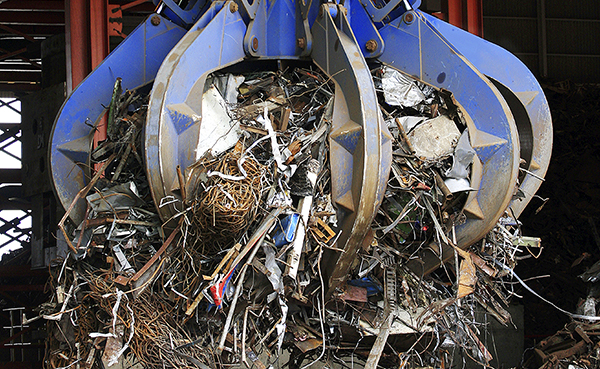The push to reduce carbon emissions will create “a large opportunity” to grow scrap’s share in current steelmaking raw materials beyond its current average of 30%, said McKinsey & Company’s Dr Steven Vercammen in a Bureau of International Recycling (BIR) webinar this week.
The key challenges, added Vercammen, senior knowledge expert at the consultancy, are to extract more scrap from the system and to enhance quality.
Having traditionally followed iron ore and coking coal trends, scrap prices are likely to “disconnect” as a result of “this whole decarbonisation pressure and the importance of using more scrap to be able to reduce CO2 emissions”, said Vercammen.
Prices of value-added scrap will increase, agreed Dr Benedikt Zeumer, McKinsey partner. “Recycled materials will be much more favourable in terms of CO2 emissions and probably also energy intensity,” he contended.
“A few years ago, there was concern that China might become a huge scrap exporting country, with the effect that it would hurt scrap prices around the world,” observed Scott Newell, chairman of US-based Newell Recycling Equipment and vice chairman of China Recycling Newell Equipment.
“The opposite is what is happening. China will need to import scrap rather than iron ore and coal in order to reach the goals of a cleaner environment and more cost-effective steel production,” he added.
Around 630 million tonnes of steel scrap are recycled worldwide every year, preventing nearly 950mt of CO2 emissions and making “a decisive contribution to climate protection”, confirmed BIR Ferrous Division statistics advisor Rolf Willeke. Adding in scrap usage within the foundry sector, annual CO2 emission savings amount to over 1 billion tonnes, Kallanish notes.
Willeke highlighted a 47.1% surge in China’s steel scrap consumption to a world-topping 137.95mt in the first six months of 2021. This reflects the objective announced in China’s latest Five-Year Plan to reduce CO2 emissions in crude steel production through increased steel scrap usage.
George Adams of SA Recycling said mills in the US “continue to make record profits on wide margins between scrap and new steel prices”. Barring unforeseen events, he added, “the US scrap market can be expected to remain steady and range-bound through to the end of 2021 on continued logistical delays and steady new steel demand”, with any bias towards “a slight upside, especially for shredded”.
Scrap prices in Japan have remained “in a rather high range” over recent months whereas exports have been on a downtrend, according to Ted Taya of Shinsei Scrap Co.
Denis Reuter of TSR Recycling in Germany said the outlook appears “difficult” for the remainder of the year, not least because steel production cuts of 15-20% are projected for this period in response to soaring energy prices.
Burcak Alpman Turkey






